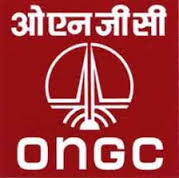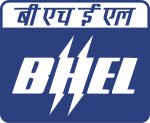
ONGC has become the first exploration and production (E&P) company in India to execute Under Balance Drilling. Drilling Services, Mumbai region has implemented Under-Balanced Drilling (UBD) pilot project in the Heera and Mumbai High fields.
What is UBD and what are its advantages?
Underbalanced Drilling (UBD) is an alternative method of drilling where the wellbore pressure is maintained lower than the formation pressure while drilling. The primary advantage of Underbalanced Drilling is to reduce formation damage in reservoirs that may be caused by a number of factors including solids invasion, phase trapping, clay swelling, and emulsification. As a result, a correctly applied Underbalanced Drilling project can provide an increased net present value and increase the amount of economically recoverable reserves. Other benefits include
- Zero damage to formation and thereby enhancing oil production from the wells.
- Reduction of mud related Non Productive Time
- Reservoir assessment while drilling.
- Improve well placement in the reservoir section by real time analysis
In line with above objectives, drilling was initiated using base oil which was replaced by produced fluid as the drilling proceeded. Average ECD of 4.1 MWE was achieved during drilling of first well and which was further reduced to 3.9 MWE in second well. Lower completion was run and packer was set in flowing conditions in both wells.
Project Planning: Designing under balanced drilling process in which produced fluid was to be stored and circulated for drilling that also on an offshore rig was a colossal task. Each project activity was planned and executed with exhaustive deliberations. With full support from each of the many stake holders, project was designed and built to the execution stage.
A Hazard Identification (HAZID) analysis for identification of Hazards was carried out through independent facilitator and all the observations of the HAZID were closed. Subsequently during Hazard Operability (HAZOP) analysis, Process Flow Diagrams (PFD), Process & Instrumentation Diagrams (P&ID), Valve Numbering Diagrams (VND) and detailed procedures has been discussed and finalized. Further, OISD has given its consent for the UBD project. Detailed Drilling Well On Paper (DWOP) has been deliberated and drafted for the execution of UB drilling phase.
Project Execution: Drilling up to landing point in three wells of HK has been completed by 17th March 2016. UBD equipment rig up was started on 6th March 2016 while rig was preparing the wells for UBD. After initial teething during commissioning, Under Balance Drilling phase in first well HK#2H was started on 6thApril 2016. Drilling was initiated with 100 psi of under balance by injecting Nitrogen in concentric annulus of 9-5/8” x 7” tie back casing while pumping base oil as drilling fluid.
With the experience gained from first well and based on lessons learnt, equipment rig up on second well HK#9H was completed in 5.5 days. Well started producing crude while drilling 6” drain hole in under balanced condition. In flow test well produced crude at average rate of 1683 bopd. Driling was terminated by real time analysis of reservoir fluid along with LWD logs.
Highlights:
- Real time monitoring of reservoir behaviour while placing the well improved decision making.
- Well HK#9H has produced well fluid while drilling 6” drain hole.
- A complete package of RSS-LWD was run in UBD conditions.
- Lower completion ERD packer set in Under Balance condition.
- During drilling with UBD technology about 4699 bbls of crude exported to platform.
- UBD specific well head assembly was designed in consultation with M/s BHEL.






Leave a Reply
You must be logged in to post a comment.